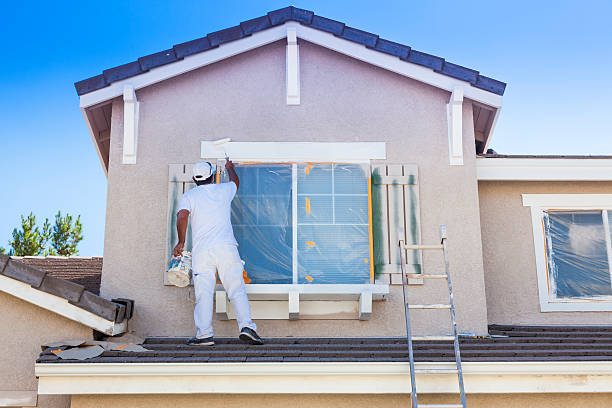Refreshing walls, ceilings, and surfaces is one of the simplest ways to improve any property. Whether you're updating a home or enhancing a workplace, surface renewal can make a huge difference in appearance and atmosphere. It also plays a role in preserving the value and integrity of your space. Knowing how to approach the process can save time, reduce stress, and ensure a longer-lasting finish. This article shares practical tips to help you get the most out of your next project.
Why Surface Renewal Matters
Over time, walls and surfaces wear down. Dirt builds up. Colors fade. Cracks and stains become more visible. These changes can make a space look old and neglected. Renewing surfaces gives them a clean and updated look. It also protects them from further damage. A well-maintained space is easier to clean, feels more welcoming, and can even support better moods and productivity.

Preparation is a key step. Rushing into the job without it can lead to poor results. Start by clearing the area. Remove furniture or cover it with plastic sheets. Protect flooring with drop cloths. Next, inspect the walls and surfaces. Fill any holes or cracks with filler. Sand rough areas and clean the surface thoroughly. A smooth, clean surface helps new finishes stick better and last longer.
Choosing the Right Colors and Finishes
Colors impact how a space feels. Light shades can make rooms feel bigger and brighter. Dark tones can add depth and warmth. Neutral tones are a safe choice, especially for shared or public spaces. Finish types also matter. Matte hides flaws but is harder to clean. Glossy is easy to clean but can show imperfections. Satin and eggshell finishes offer a good balance for many spaces. Think about lighting and the function of the space when choosing colors and finishes. Natural and artificial light can change how colors appear at different times of the day.
Residential Painting Tips
When working on your home, think about comfort and personality. Every room serves a different purpose. Bedrooms benefit from calm, soothing colors. Living areas do well with warm, inviting tones. Kitchens and bathrooms often need finishes that resist moisture and are easy to wipe clean. Residential painting also gives homeowners a chance to add personal style. Accent walls, trim colors, or even painted furniture can give a space character without a full renovation.
Commercial Painting Considerations
Business spaces have different needs. Durability and maintenance are important. High-traffic areas need finishes that can handle frequent cleaning. Colors should align with your brand and support a productive work environment. Commercial painting projects also require careful planning to avoid disrupting business. Work may need to be scheduled outside of business hours or in phases. Hiring professionals with experience in commercial settings helps ensure smooth execution.
Hiring the Right Help
Not all painting jobs are the same. A professional can save time and deliver better results. Look for painters with good reviews and proper licenses. Ask for a written quote and details about materials they plan to use. Be clear about your goals and expectations. A good contractor will offer suggestions based on your space and needs. They should also explain the steps involved, from prep to cleanup.

Maintenance After Renewal
Keeping surfaces clean extends the life of your new finish. Dust walls regularly and clean stains quickly. Avoid harsh chemicals unless the surface is rated for them. Watch for signs of damage like peeling or cracks. Catching problems early makes them easier to fix. Plan for touch-ups as needed, especially in high-use areas.
Final Thoughts
Surface renewal can change how a space looks and feels. It’s a practical upgrade that benefits both homeowners and businesses. With the right approach, you can enjoy long-lasting results that make your environment more appealing and comfortable.